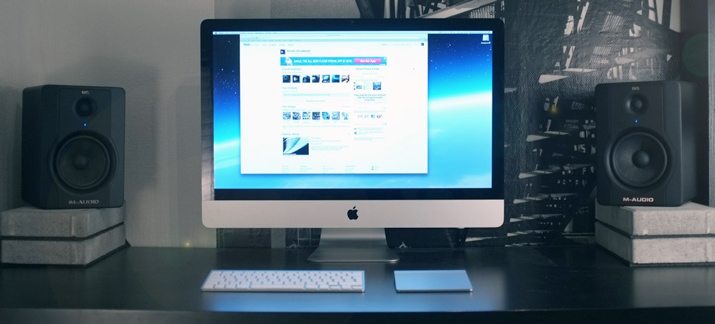Freelancing 101: How to Help People Understand Your Job
Just because you have a “home office”, it doesn’t mean you’re really working. How often have you gotten this response from friends or family? They just don’t always seem to get the life of a freelancer…
The hours are different for freelancers. The workplace may not look like an office at all, and can sometimes be the kitchen table. But that doesn’t mean you are not working. Chances are you are working exceptionally hard. Sometimes it just takes a little explaining to help everyone else better understand your job.
Come Up With a Elevator Pitch

The first step in explaining your freelance career to others is to have a simple understating of it yourself. You should be able to explain your job in a single sentence.
An overly complicated explanation muddies the waters and people might stop hearing what you have to say. Does your job description start with “well, I work from home?” Then change it. People who work in office don’t say “I work in the building on 2nd Street.”
Develop a clear job description that’s interesting. For example I explain freelancing as this: “I teach web design and development through writing.” Then if the person wants to know more I mention some of the topics I have written about or sites that my work appears on. Only when asked, do I bring up that I can do all this in my pajamas.
With family, it can get a little more complicated because they likely already know that you work from home. They’ve seen your car there in the middle of the afternoon or popped by to find you pounding away at the computer. There are tactics for these people as well.
Back It Up With Numbers
Understand the workforce you are a part of and be able to speak about it. The Freelancers Union conducts an annual survey of the freelance workforce and it is packed with statistics you can use to back up your work.
The most recent survey was released at the end of 2014 and showed that 34 percent (53 million workers) of Americans are doing freelance work. These workers contribute about $715 billion to the economy. (At last count that number was lower in Europe, with about 15 percent of the workforce calling themselves freelancers.) You can read the full report for plenty of other numbers and information about who freelancers are and how they break down in “Freelancing in America: A National Survey of the New Workforce.”
Here are three more findings from the survey:
- 32 percent of freelancers have seen an increase in demand for work in the past year.
- 38 percent of freelancers expect their hours to increase in the next year based on demand.
- 80 percent of all workers say they would be willing to do work outside of their primary jobs.
Talk About Work Seriously

While you may take your work very seriously, sometimes it is easy to talk about it in a more lighthearted way around others. Avoid falling into that trap. You need a serious job for people to take your work seriously.
Think of all the things you have to do on a daily, weekly, monthly and annual basis:
- Interact with clients
- Draft contracts
- Invoice and collect payments
- Provide services
- Pay taxes
- Pitch projects and draft proposals
- Attend conferences and networking events
Now think about the way you describe these tasks. Use the wording above and stay away from more casual language. People will only take your work as seriously as you talk about it.
Show Your Professionalism

Many of us that work from home make the same joke – “It’s great to work in our pajamas.” But does that help the impression we are giving people? You don’t necessarily have to wear a suit to your home office, but you should get up, get dressed and look at least business casual.
Don’t think that’s necessary? Here are three reasons to rethink wearing your pajamas:
- A client wants to video conference about a project.
- A lunch meeting or networking opportunity comes up at the last minute. You don’t want to bail because you have not showered, do you? (Or worse, show up looking disheveled.)
- You will feel like you are in the “work zone.” Other in the household will be able to see it as well. If you are dressed for work, people won’t assume you are playing games online.
Carry that professionalism out of your home office as well. Remember common rules of business courtesy.
- Be on time to meetings (even calls).
- Dress appropriately.
- Always have necessary tools for the job.
- Carry a clean portfolio, bag or briefcase.
- Speak clearly and shake the hands of those you meet.
- Carry business cards and hand them out.
- Treat everyone you meet like a potential client.
Think about your job title. You may think of yourself as a “design diva” or “developing dude,” but in professional conversations, those titles can do more harm than good. Stick to traditional roles in professional settings to earn more credibility. Use words like designer, developer, writer, photographer, videographer or small business owner.
Think about the way your work environment looks. Is your office clean or dirty? How many things are piled up on your desk? Would you be allowed to have a workspace like that in a traditional office? (When you are on those video calls, others do catch a glimpse of your work area.)
Set Work Boundaries
If you work from home, set some boundaries. Don’t allow friends and family to come by whenever they want and take you away from work.
Treat work hours from home just as you would work hours in an office. Make it clear what hours you are working and not available. If you must, don’t answer personal phone calls, emails or even your front door during these time frames to emphasize that you are indeed working.
Brag a Little

The best way to help people understand what you do is to show them. This is especially easy for designers who create tangible things. Pick a project you are especially proud of and show it to your friends and family when they ask about your work.
The first time you do this it may feel odd, but it does work. A quick personal story: None of my family members really understood my work until we were driving along one day and I showed them a billboard that I did the creative for. That simple moment changed the way they thought about my work and many of the questions about my work ended.
You can use social media in the same way. Highlight projects that you can. Note awards or honors that you have won. (Just don’t do it too much. Save the bragging for when it is deserved.)
Conclusion
The life of a freelancer can be filled with challenges, including getting people to just understand your job. Take a few minutes to develop the story of your career so that you can easily explain what you do. A little simple prep (and a few hard facts) can help you better educate your circle about life as a freelance worker.
Freelancing 101 is a monthly series to help the increasing number of freelancers in the market. Whether you are a designer, writer, developer or wear multiple hats, we will share tips, resources and ideas to help you make the most of your small business. Is there something in particular you want to know? How do you feel about this series? Let me know at [email protected].
Image Sources: Realistic Shots and Gideon Tsang.